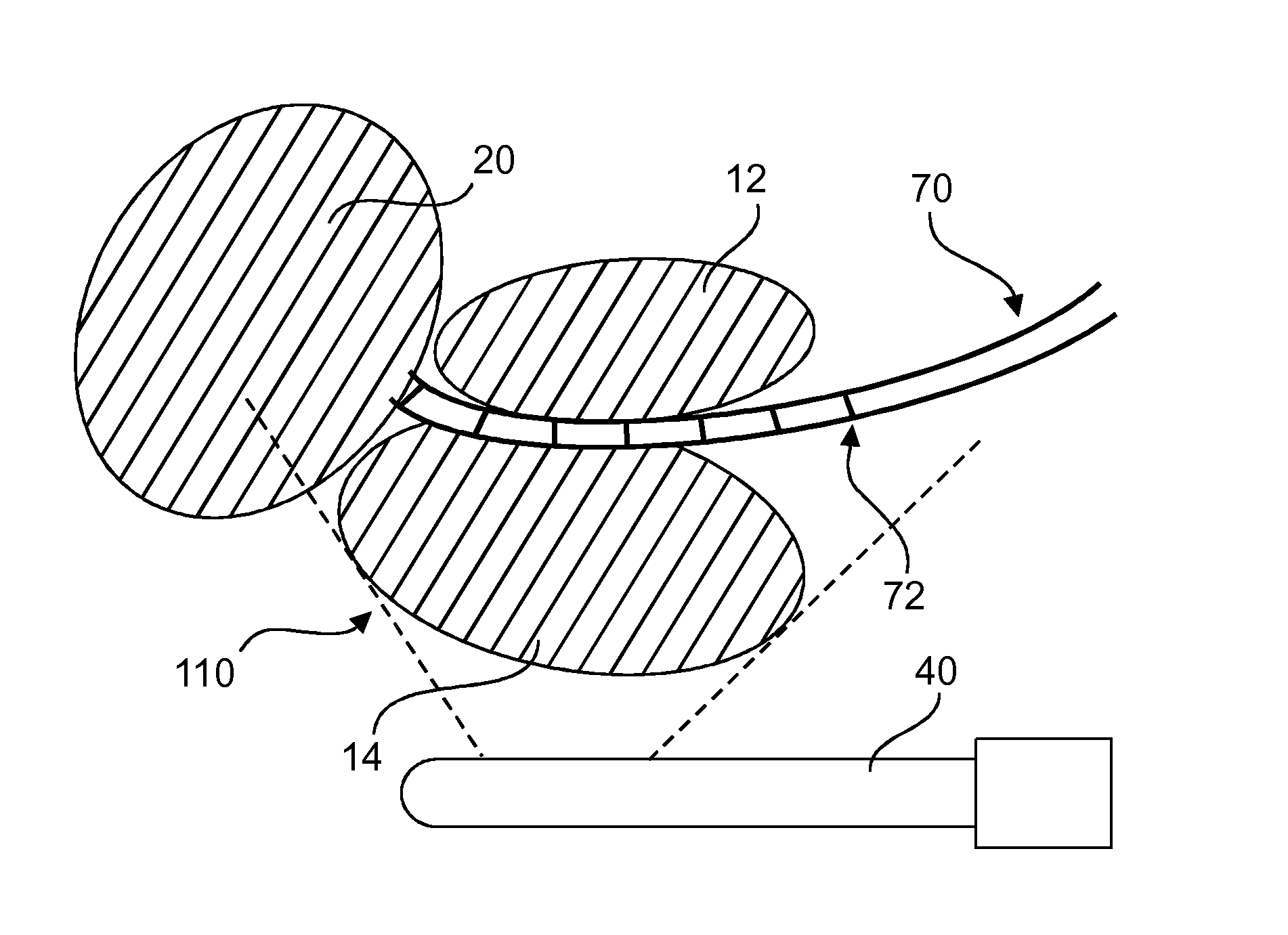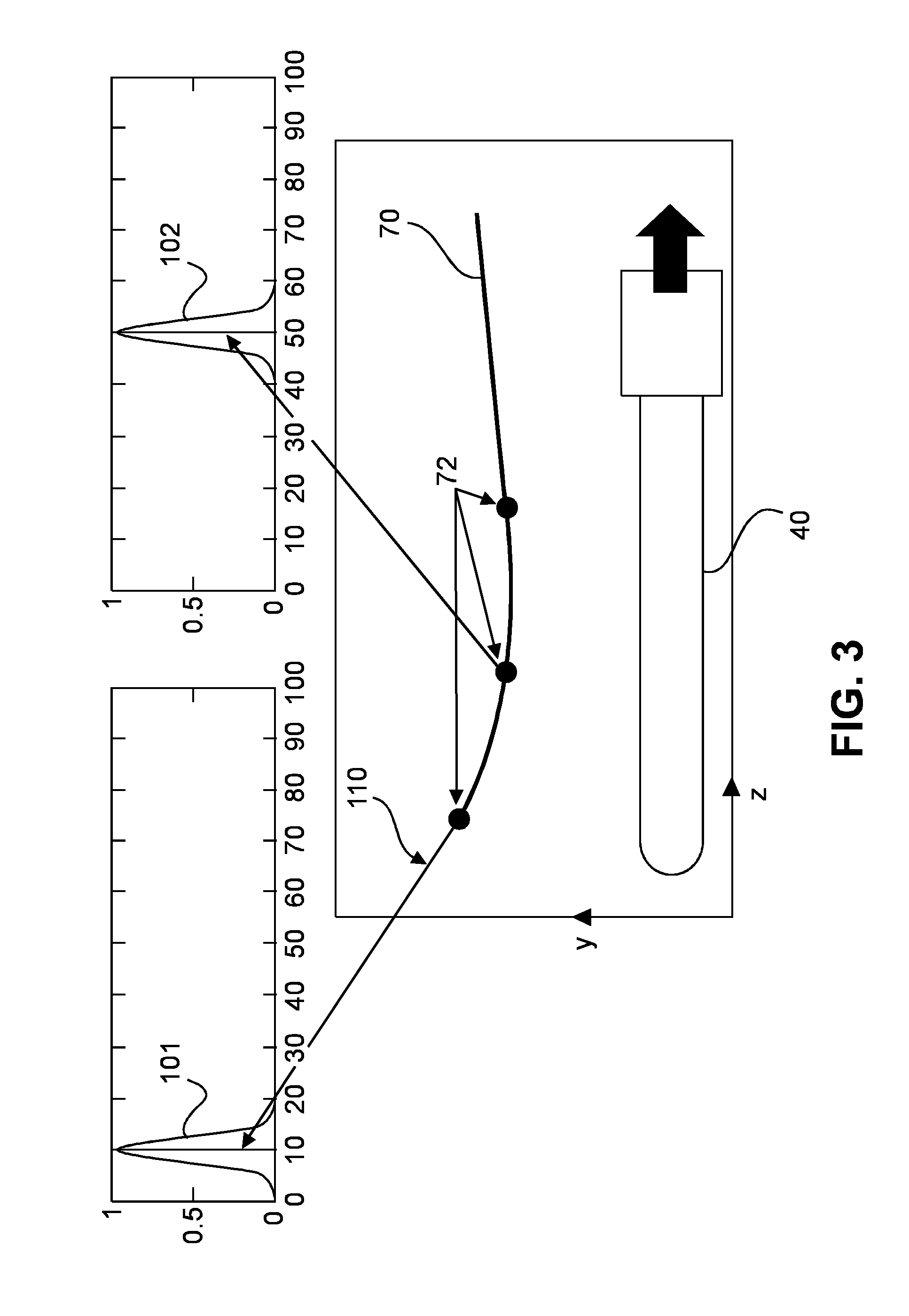Method and system for localizing body structures
a body structure and localization technology, applied in the field of body structure localization, can solve the problems of insufficient and inaccurate knowledge, prostate cancer, and almost all patients' urinary symptomatology, and achieve the effects of high localization accuracy, improved clinical outcomes, and reduced clinical workload and cos
- Summary
- Abstract
- Description
- Claims
- Application Information
AI Technical Summary
Benefits of technology
Problems solved by technology
Method used
Image
Examples
first embodiment
[0037]In the present embodiments, the use of such a Foley catheter 70 with embedded US sensors 72 enables real-time localization of the prostatic urethra 30 which is a crucial in the brachytherapy procedure to avoid unnecessary or excessive radiation dose to the prostatic urethra 30. The Foley catheter 70 is equipped with one or multiple US sensors 72 that are mounted at a fixed distance from one another in the
[0038]In the following, the word “catheter” is used as a generic term to denote a catheter equipped with sensors or a guide wire equipped with sensors inside a catheter.
[0039]During the brachytherapy procedure, a transrectal US (TRUS) probe 40 is used as an ultrasound signal source required for sensor-tracking The US sensors 72 on the Foley catheter 70 receive ultrasound waves emitted by the TRUS probe 40. In particular, the ultrasound signals received from appropriate A-line(s) of the TRUS probe 40 as the beam of the TRUS probe 40 sweeps the field of view can be analyzed for ...
third embodiment
[0054]FIG. 4 shows a schematic arrangement of a localization system with a single-sensor catheter 70 in closed-loop control which can be used for 2D TRUS probes 40.
[0055]In the third embodiment, the catheter 70 has a single US sensor 72, wherein the output signal 720 of the single US sensor 72 is input to a computer or controller 200 that controls a retractor or retracting device 300 that retracts the catheter 70. The controller 200 may be controlled by a control procedure implemented as a software routine. Similarly, the encoded TRUS probe 40 may be retracted manually or automatically.
[0056]In the automatic system with closed-loop control, the retractor 300 can be controlled by the controller 200 based on the sensor output signal 720 and a probe position signal 420 received from the TRUS probe 40, in a way that the US sensor 72 is always kept in the 2D image plan of the moving TRUS probe 40. Then, the 2D position of the US sensor 72 in the TRUS image can be combined with the posit...
fourth embodiment
[0057] the controller 200 may control a robot (not shown) that advances or retracts the TRUS probe 40. Additionally, the sensor-equipped catheter 70 is retracted or advanced by the retracting device 300, as shown in FIG. 4. The probe-holding robot is controlled in a way that the US sensor 72 is always kept in the 2D image of the moving TRUS probe 40. Again, the 2D position of the US sensor 72 in the TRUS image can be combined with the position of the TRUS probe to reveal the 3D position of the US sensor 72.
PUM
 Login to View More
Login to View More Abstract
Description
Claims
Application Information
 Login to View More
Login to View More - R&D
- Intellectual Property
- Life Sciences
- Materials
- Tech Scout
- Unparalleled Data Quality
- Higher Quality Content
- 60% Fewer Hallucinations
Browse by: Latest US Patents, China's latest patents, Technical Efficacy Thesaurus, Application Domain, Technology Topic, Popular Technical Reports.
© 2025 PatSnap. All rights reserved.Legal|Privacy policy|Modern Slavery Act Transparency Statement|Sitemap|About US| Contact US: help@patsnap.com



